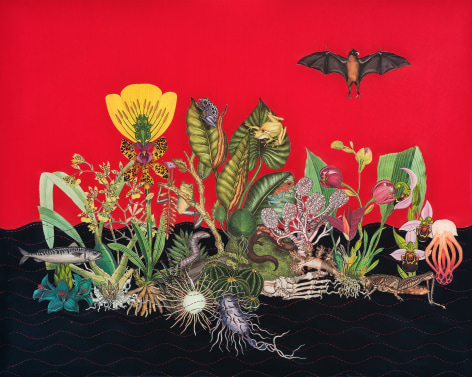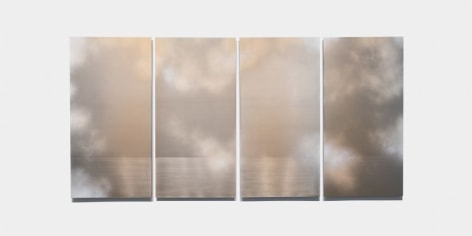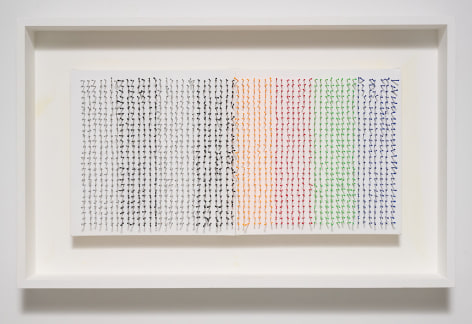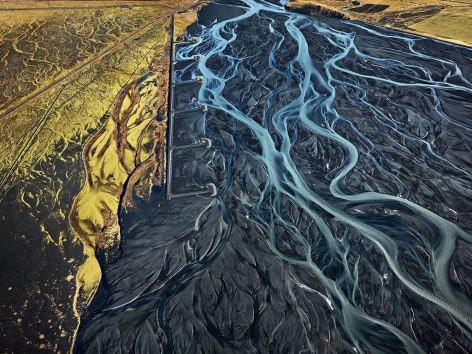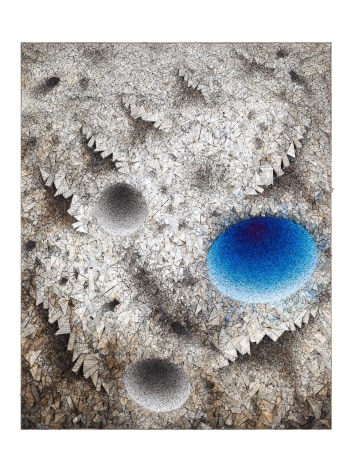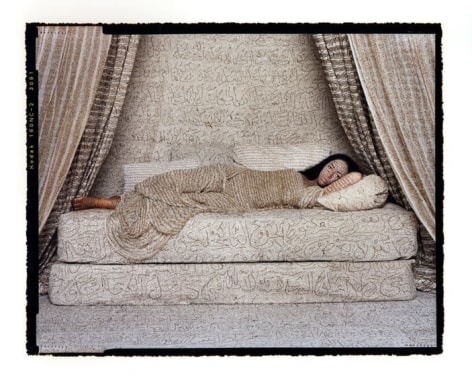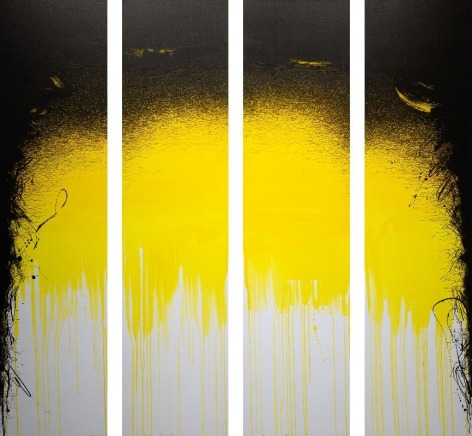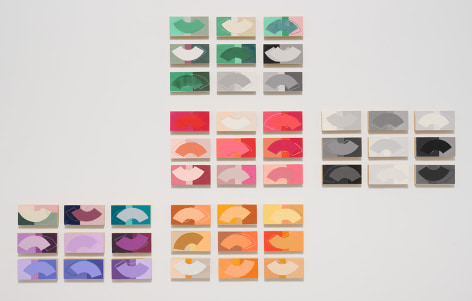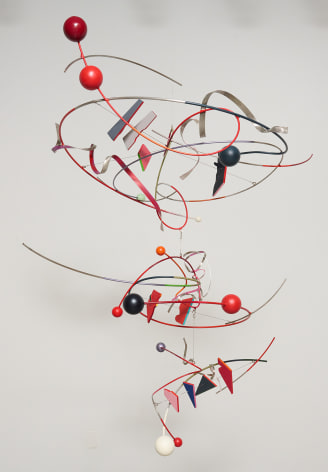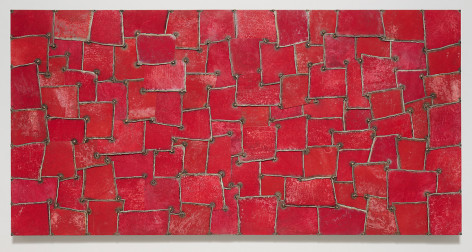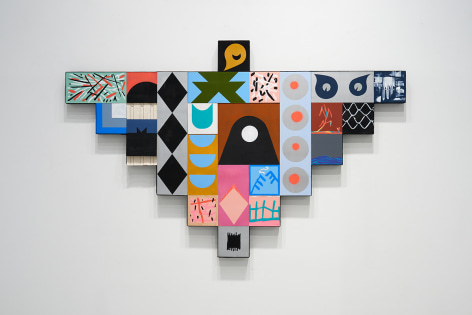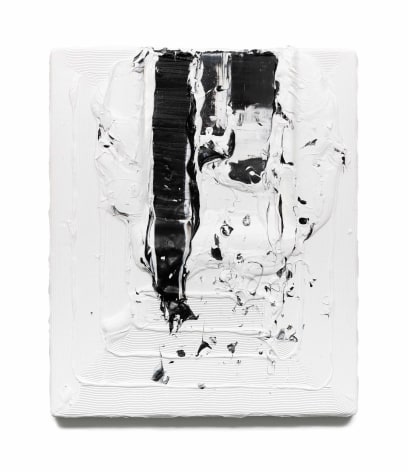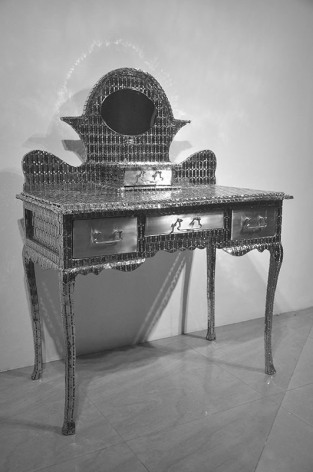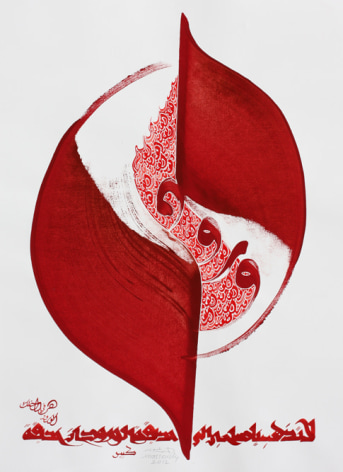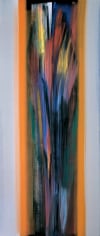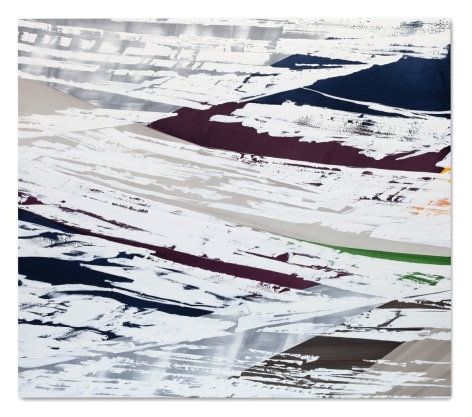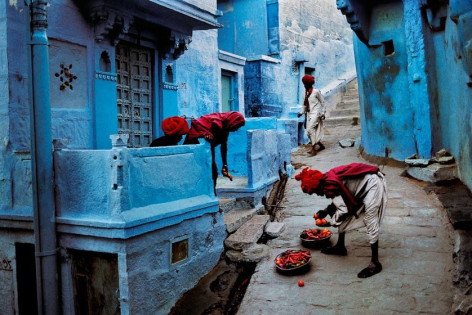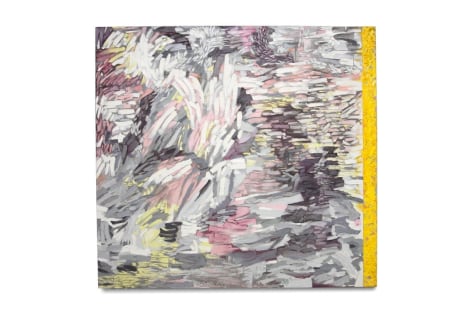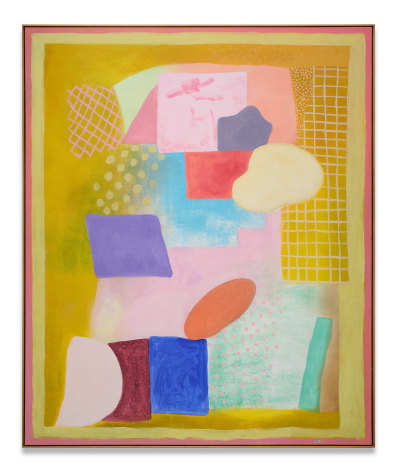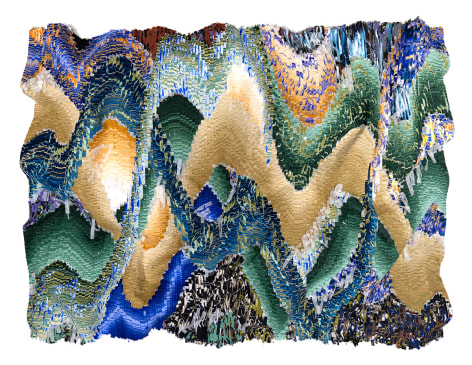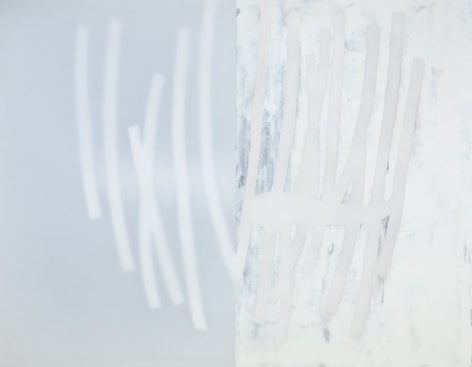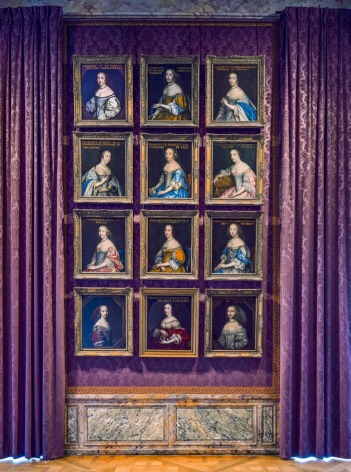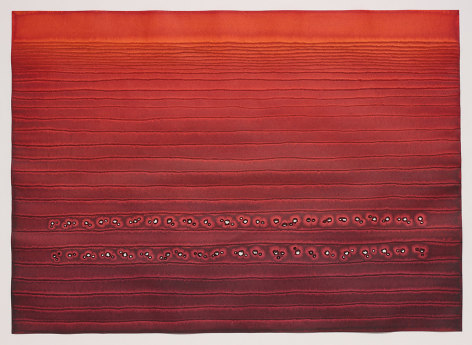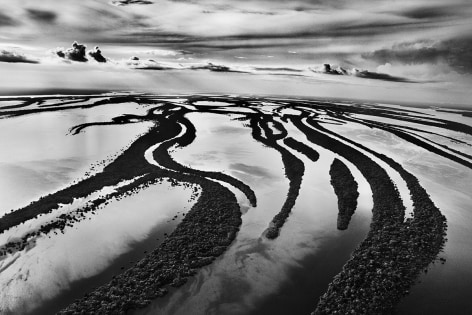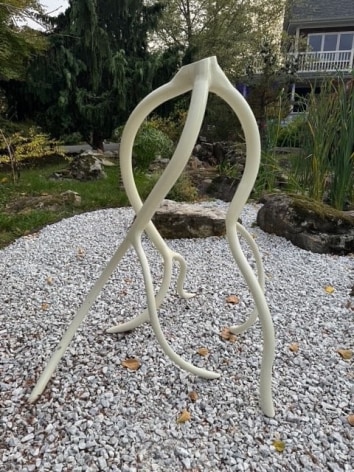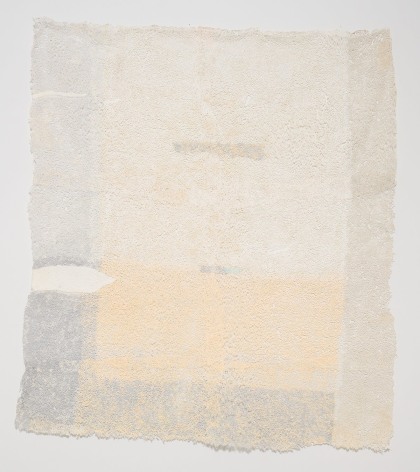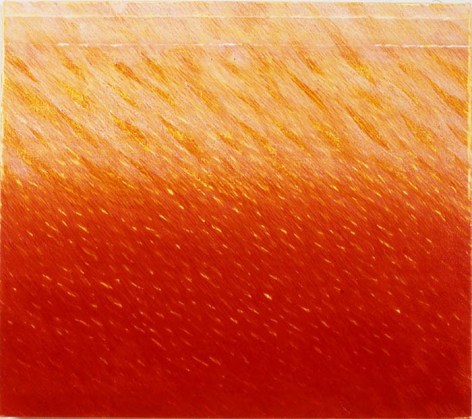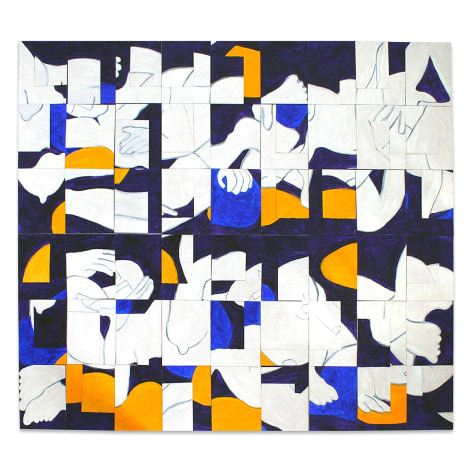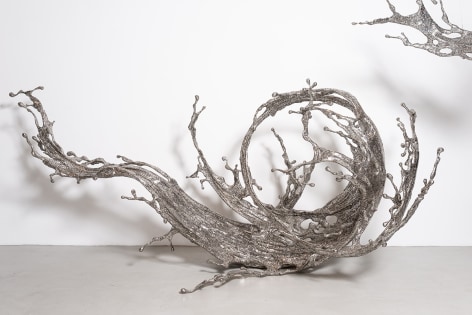As we celebrate our 25th anniversary, we are pleased to present a wide-ranging exhibition of paintings, sculptures, photographs and installations. The show includes work by more than thirty artists—from those who have been with the gallery since its founding in 2000 to those we have partnered with more recently.
When Sundaram opened his first gallery on Greene Street in SoHo in 2000, his mission was to show that some of the best, most meaningful art was being created by artists deeply engaged in cross-cultural explorations. He focussed on diasporic artists and those from underrepresented cultures outside Europe and the United States, with the aim of bringing them to the forefront. Crossing cultural and national boundaries, these artists, including Sohan Qadri (b. 1932, India; d. 2011), Natvar Bhavsar (b. 1934, India) and Nathan Slate Joseph (b. 1943, Israel), synthesized Western visual languages with forms, techniques, and philosophies from Asia, the Subcontinent, and the Middle East. By incorporating authentic elements from their own cultures, artists from the periphery added richness and complexity to the artistic language that dominated the Western canon. They produced paintings, drawings, sculptures and installations that emphasized materiality. Aesthetically and intellectually rigorous, their work was infused with humanism and spiritual significance.
From the beginning, Sundaram also chose to focus on exceptional women from the New York School who had long been overshadowed by their male peers, including Susan Weil (b. 1930, New York), an artist who had a significant influence on Robert Rauschenberg’s blueprint works; Judith Murray (b. 1941, New York); Merrill Wagner (b. 1935, Tacoma, Washington); and Joan Vennum (b. 1930, New York; d. 2021). Although he was not consciously seeking to challenge the prevailing notion that Western men made the most collectible art, that is precisely what he accomplished by widening the tent.
OUR LOCATIONS
After developing an enthusiastic following in New York, the gallery expanded to the West Coast, opening in Beverly Hills in 2008. Later the same year, Sundaram realized a long-held dream of establishing a branch in Asia, opening a three-story gallery on Hollywood Road, in the heart of Hong Kong’s nascent arts district. We were the first international gallery of our kind to set up in the city, paving a path others soon followed. In 2012, Sundaram was invited by the Singaporean government to open a gallery in Gillman Barracks, the former British military compound of whitewashed colonial buildings. Once again, we were the first New York gallery in the district, where we continue to stage major exhibitions.
Our newest gallery is in London, a city with deep sentimental pull, where Sundaram spent countless hours in the British Museum Library as a graduate student in the 1990s and where his Indian-born father, Subho Tagore (1912–1985), an important painter and a founder of the Calcutta Group, honed his craft at what was then St. Martin’s School of Art. We are currently renovating a multilevel space in the heart of the city at 27 Pall Mall, opening in April 2026.
OUR CORE VALUES
Throughout its history and across all locations, Sundaram Tagore Gallery has consistently celebrated diversity in all forms, intercultural dialogue, and bringing people together through art. With every exhibition, our goal is to spark an exchange of ideas and to use art as a vehicle to remind people that more unites us than separates us. Today, as the world faces shared risks in public health, ecology, politics, and economics, this inclusive outlook is increasingly resonant with young artists and young collectors.
This anniversary exhibition is a look back—but it’s also the path forward. “Since the early 2000s, market value has been the dominant lens through which contemporary art is judged in much of the world, a result of globalization, speculation, and the marriage of art and finance,” says Sundaram Tagore. “Yet to view art solely through the market lens is to overlook its true worth. Art is a catalyst for change, capable of transforming thought and values. I believe we need art, artists, art enthusiasts, supporters, and arts institutions now more than ever to help bind our disparate and discontented world together.”
OUR ARTISTS
When we opened twenty-five years ago, our goal was to build a global community of artists—artists who looked beyond borders and binaries, whose work reflected a world shaped by globalization.
As we mark this milestone in our history, the gallery remains committed to supporting artists whose practices transcend geographic and cultural borders, whose work is grounded in both aesthetic and intellectual rigor, and who explore and express our shared human experience—complex, fragile, and full of possibility.
ON VIEW
Anila Quayyum Agha (b. 1965, Pakistan)
Miya Ando (b. 1973, Los Angeles)
Osi Audu (b. 1956, Nigeria)
Edward Burtynsky (b. 1955, Canada)
Chun Kwang Young (b. 1944, South Korea)
Lalla Essaydi (b. 1956, Morocco)
Golnaz Fathi (b. 1972, Iran)
Olivia Fraser (b. 1965, London)
Denise Green (b. 1946, Australia)
Fre Ilgen (b. 1956, the Netherlands)
Trishla Jain (b. 1985, New Delhi)
Nathan Slate Joseph (b. 1943, Israel)
Matthew Kirk (b. 1978, Arizona)
Karen Knorr (b. 1954, Germany)
Jane Lee (b. 1963, Singapore)
Tayeba Lipi (b. 1969, Bangladesh)
Hassan Massoudy (b. 1944, Iraq)
Vittorio Matino (b. 1943, Albania; d. 2018)
Ricardo Mazal (b. 1950, Mexico City)
Steve McCurry (b. 1950, Philadelphia)
Judith Murray (b. 1941, New York)
Robert Natkin (b. 1930, Chicago; d. 2010)
Kenny Nguyen (b. 1990, Vietnam)
Udo Nöger (b. 1961, Germany)
Robert Polidori (b. 1951, Montreal)
Sohan Qadri (b. 1932, India; d. 2011)
Sebastião Salgado (b. 1944, Brazil; d. 2025)
Hiroshi Senju (b. 1958, Tokyo)
Steve Tobin (b. 1957, Philadelphia)
Neha Vedpathak (b. 1982, India)
Joan Vennum (b. 1930, New York; d. 2021)
Lee Waisler (b. 1938, Los Angeles)
Susan Weil (b. 1930, New York)
Robert Yasuda (b. 1940, Hawaii)
Zheng Lu (b. 1978, China)
The exhibition is accompanied by a 160-page full-color book offering a comprehensive overview of the gallery’s history, with text by Sundaram Tagore.

